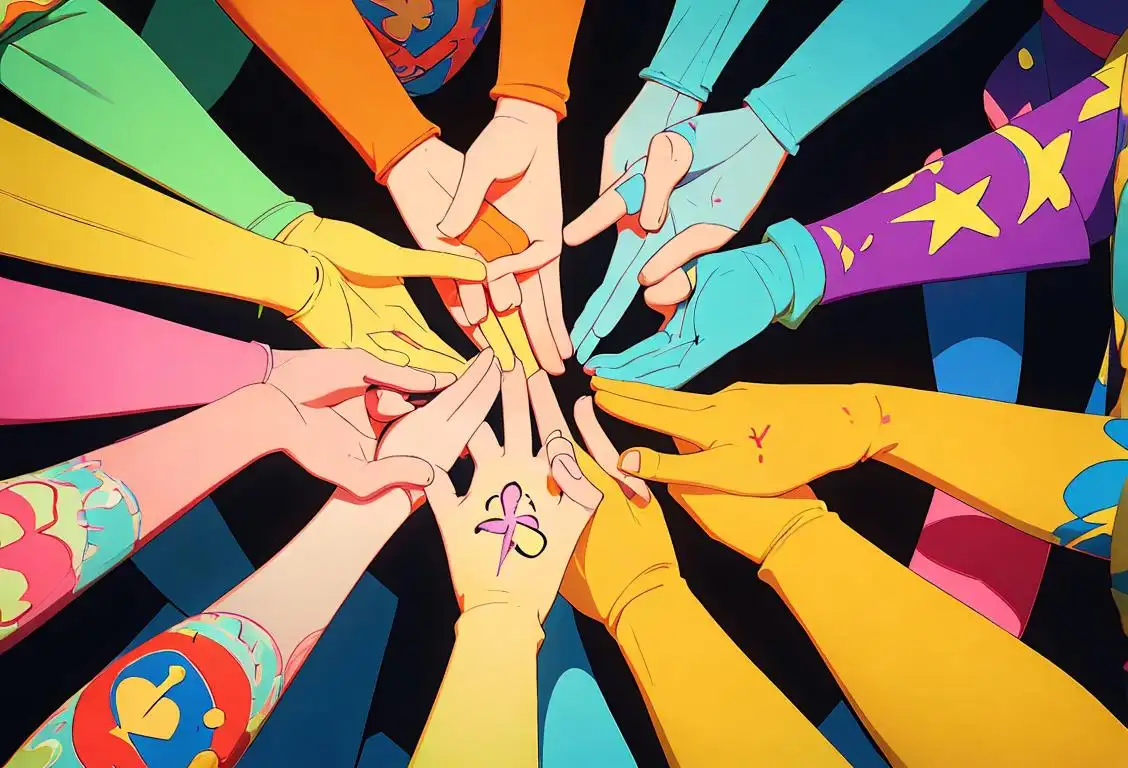National Coming Out Coming Out Day

Hey there, folks! Are you ready to come out of that closet? Well, not the actual closet where you store your winter coats and embarrassing high school yearbooks, but the metaphorical closet where you reveal your true and authentic self! That's right, today is National Coming Out Day, a chance for people of all backgrounds and orientations to celebrate their truth and share their stories with the world. So grab your rainbow flags, put on your glittery cape, and let's dive into the fabulous history of this empowering day!
When is Coming Out Coming Out Day?
It's national coming out coming out day on the 11th October.
The Birth of National Coming Out Day
Can you believe it? National Coming Out Day has been a thing since 1988! It all started when a group of LGBTQ+ activists decided that there needed to be a designated day to raise awareness and show support for people who were coming out. They chose October 11th because it marks the anniversary of the National March on Washington for Lesbian and Gay Rights that took place in 1987. Since then, National Coming Out Day has grown bigger and sparklier than a sequin parade float, with events and celebrations happening all around the world.Celebrating Love and Acceptance
National Coming Out Day is all about creating a safe and supportive environment for people to share their truth. It's a day to celebrate love, acceptance, and the incredible diversity of the LGBTQ+ community. Whether you identify as lesbian, gay, bisexual, transgender, queer, or anything else under the rainbow, this day is for you. It's a chance to say, 'I am who I am, and I'm proud of it!'Coming Out: The Modern Way
Thanks to the power of the internet, coming out has taken on a whole new meaning in the digital age. Social media platforms like Instagram, Facebook, and Twitter have become virtual coming-out parties, where people can share their stories with friends, family, and the whole wide web. Hashtags like #ComingOut, #ProudToBe, and #LoveIsLove trend on National Coming Out Day, spreading messages of love and acceptance far and wide. So go ahead, update your relationship status, post that rainbow filter selfie, and let the world know that you're living your truth.Your Loved Ones' Coming Out
National Coming Out Day isn't just about individuals coming out; it's also a day to support and uplift the loved ones of those who are coming out. Friends, family, and allies play a crucial role in creating a supportive environment for LGBTQ+ individuals. So if someone you care about confides in you and shares their truth, embrace them with open arms, give them a big hug, and let them know that they are loved and accepted.Food, Festivities, and Fun
No celebration is complete without a tasty treat or two, right? On National Coming Out Day, you can whip up some rainbow-themed recipes to add an extra splash of color to your festivities. Maybe try your hand at a rainbow layer cake, some vibrant fruit skewers, or a refreshing rainbow sherbet punch. And don't forget to decorate your space with all things rainbow and fabulous! Because let's be honest, life is so much better when it's filled with glitter, confetti, and rainbows.Remember, National Coming Out Day is a day of love, acceptance, and celebration. So let's stand together, embrace our identities, and show the world that love knows no boundaries. Happy Coming Out Day, everyone!
History behind the term 'Coming Out Coming Out'
1869
Emergence of the term 'coming out'
The term 'coming out' originally referred to debutante balls in British high society during the 1800s. When a young woman reached the appropriate age, she would 'come out' to society by attending these formal social events. This phrase symbolized her introduction into adult life and the beginning of her social visibility.
1920s
Adoption by the LGBTQ+ community
In the 1920s, the term 'coming out' underwent a significant transformation and became associated with the LGBTQ+ community. It began to describe the process of publicly acknowledging one's sexual orientation or gender identity. This shift was fueled by the growth of LGBTQ+ subcultures and the need for individuals to find support and understanding in a society that often stigmatized non-heteronormative identities.
1960s
Coming Out Movements
The 1960s marked the emergence of widespread activism and advocacy for LGBTQ+ rights. During this time, 'coming out' took on a political dimension as a form of protest and empowerment. The idea behind 'coming out' movements was that visibility could challenge societal norms and reduce prejudice. Activists encouraged individuals to courageously share their sexual orientation or gender identity to promote social change.
Late 20th Century
Mainstream acceptance and popularization
Throughout the late 20th century, 'coming out' gradually gained recognition and acceptance in mainstream culture. The increased portrayal of LGBTQ+ characters and stories in movies, TV shows, and literature brought the term to wider audiences. Simultaneously, influential public figures, including celebrities and politicians, 'came out' publicly, challenging stereotypes and inspiring others to embrace their identities.
Present
Empowering millions and continued progress
Today, 'coming out' holds deep personal significance for millions of LGBTQ+ individuals worldwide. It remains a pivotal moment in their lives, allowing them to authentically express their identities and find acceptance within supportive communities. 'Coming out' has become an ongoing process, and society continues to evolve toward greater inclusivity and understanding.
Did you know?
Did you know that National Coming Out Day falls on the same day as the International Day of the Girl? It's a double celebration of empowerment, self-expression, and breaking down societal norms. So let's celebrate and uplift girls and LGBTQ+ individuals all around the world!Tagged
awareness fun loved onesFirst identified
10th October 2015Most mentioned on
11th October 2016Total mentions
456Other days
Compliment Day
Cheese Pizza Day
Pumpkin Day
Medal Of Honor Day
Guac Day
Foundation Day
Suicide Prevention Day
Memorial Day
Cancer Survivors Day
Bacon Day









